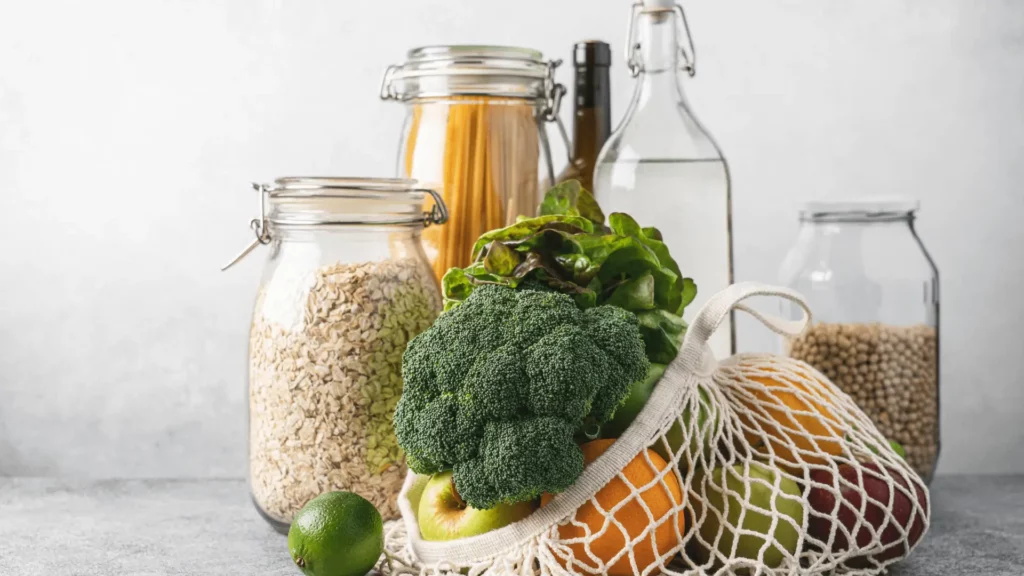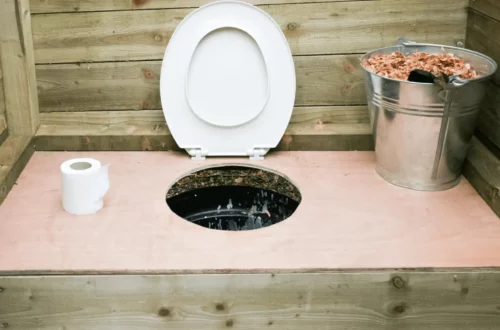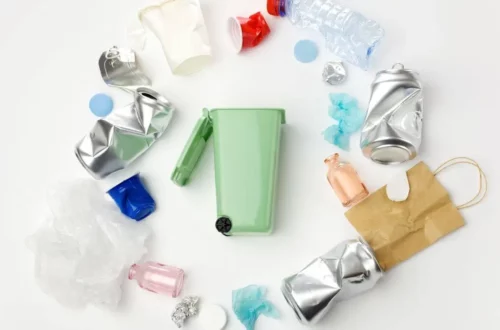The Ultimate Guide to Zero Waste Swaps: Simple Steps to Reduce Waste

Are you looking to live a more sustainable lifestyle and reduce your environmental impact? It’s time to make some easy zero waste swaps! Transitioning to a zero waste lifestyle may seem overwhelming, but it’s all about taking small steps towards a bigger goal. In this article, we will provide you with simple and effective zero waste swaps that you can incorporate into your everyday life.
Imagine a world where you no longer rely on single-use items that end up in landfills or contribute to pollution. By making eco-friendly swaps, you can make a positive difference and inspire others to do the same. From alternative products to waste reduction tips, we’ve got you covered. Discover sustainable alternatives to common wasteful habits, whether it’s in your choices for personal hygiene, kitchen, or everyday essentials.
Reduce your environmental footprint and embrace a lifestyle that aligns with your values. Read on to learn practical tips and inspiration to live a waste-free, eco-conscious life. Let’s make a difference, one swap at a time.
Introduction to Zero Waste Swaps
Living a zero waste lifestyle is all about minimizing the amount of waste we generate and choosing sustainable alternatives. By making simple swaps in our daily routines, we can significantly reduce our environmental impact and contribute to a healthier planet.
The concept of zero waste is centered around the principles of reducing, reusing, and recycling. It involves reevaluating our consumption habits and adopting eco-friendly alternatives that help us generate less waste.
Making sustainable swaps is crucial because our current linear consumption patterns are taking a toll on the environment. From the excessive use of single-use plastics to the overconsumption of resources, it’s time for us to rethink how we consume and make conscious choices.
By replacing wasteful items with reusable and recyclable options, we can make a positive difference. Each small change we make adds up, making a significant impact over time.
Ready to embark on your zero waste journey? In the following sections, we’ll explore easy and practical zero waste swaps for various areas of your life. From the kitchen to the bathroom, from cleaning to fashion, we’ll provide you with a range of sustainable alternatives that you can start implementing today. Let’s dive in and discover the power of zero waste swaps.
Also read: The Ultimate Guide to Zero Waste Living
Kitchen Swaps
Making simple zero waste swaps in your kitchen can contribute to a more sustainable lifestyle. By choosing reusable alternatives for commonly used items, you can significantly reduce your environmental impact. Here are some easy zero waste swaps for the kitchen:
Reusable Produce Bags
Instead of reaching for plastic bags at the grocery store, opt for reusable produce bags made from lightweight and washable materials, such as organic cotton or mesh. These bags are perfect for storing fruits and vegetables, eliminating the need for single-use plastic bags.
Stainless Steel Straws
Say goodbye to plastic straws and switch to reusable stainless steel straws. They are durable, easy to clean, and can be used again and again. Carry a stainless steel straw in your bag or keep a set at home to enjoy your favorite beverages without contributing to plastic waste.
Beeswax Wraps
Say goodbye to plastic cling wraps and embrace the eco-friendly alternative of beeswax wraps. Made from organic cotton coated in beeswax, these wraps can be used to cover food containers or wrap fruits, vegetables, sandwiches, and more. They are reusable and can be easily cleaned with mild soap and water.
Glass Food Containers
Transition from plastic food storage containers to glass containers. Glass is a safer and more sustainable option as it doesn’t contain harmful chemicals and is easily recyclable. Glass containers are versatile, allowing you to store leftovers, pack lunches, and organize your pantry while reducing single-use plastic waste.
Compost Bin
Implementing a composting system in your kitchen can divert organic waste from landfills and help nourish the soil. Set up a small countertop compost bin where you can collect fruit and vegetable scraps, coffee grounds, and eggshells. These items can then be transferred to an outdoor compost pile or a community composting facility.
By making these simple swaps in your kitchen, you can contribute to a greener and more sustainable world. Remember, every small step counts on the journey towards a zero waste lifestyle.
Also read: Zero-Waste Kitchen Swaps You Need to Make
Bathroom Swaps
When it comes to reducing waste and adopting a sustainable lifestyle, the bathroom is a great place to start. There are plenty of zero waste alternatives for personal care products that can help you minimize your environmental impact. Here are some easy swaps you can make:
Solid Shampoo Bars
Instead of using traditional liquid shampoos that come in plastic bottles, opt for solid shampoo bars. These bars are typically packaging-free or come in minimal and recyclable packaging. They work just as effectively as liquid shampoos and cut down on plastic waste.
Bamboo Toothbrushes
Swap your regular plastic toothbrush for a bamboo toothbrush. Bamboo is a sustainable and biodegradable material, making it a great eco-friendly alternative. Look for toothbrushes that have compostable bristles or ones made from plant-based alternatives.
Refillable Toiletry Containers
Instead of buying single-use travel-sized toiletries, invest in refillable containers. By refilling them with your favorite products, you can reduce the amount of plastic waste generated during your travels. Look for products that offer refills in bulk or seek out stores that have refill stations.
Reusable Cotton Rounds
Ditch disposable cotton rounds and choose reusable ones made from organic cotton or bamboo. These can be easily washed and reused, reducing the amount of waste generated from your skincare routine.
Menstrual Cups or Cloth Pads
For menstrual care, consider switching to a menstrual cup or cloth pads. These alternatives are reusable, reducing the amount of single-use plastic and waste associated with disposable tampons and pads.
Natural Soap and Bodywash
Instead of conventional body washes and soaps that come in plastic bottles, opt for natural and package-free alternatives. Look for locally made soap bars that are free from harsh chemicals and come in minimal packaging.
By making these simple swaps in your bathroom routine, you can significantly reduce waste and contribute to a more sustainable lifestyle. Remember, every small change adds up and makes a difference in the long run.
Also read: The Importance of Implementing the 5Rs of Waste Management
Cleaning Swaps
When it comes to reducing waste and adopting a more sustainable lifestyle, making simple swaps in cleaning products can make a big difference. By choosing alternatives to traditional cleaning products, you can minimize your environmental impact and contribute to a cleaner and healthier planet.
DIY Cleaning Solutions
One of the easiest and most cost-effective cleaning swaps is to make your own DIY cleaning solutions. Using common household ingredients such as vinegar, baking soda, and lemon juice, you can create effective and non-toxic cleaners for various purposes. These homemade solutions not only reduce plastic waste from store-bought cleaning products but also eliminate the need for harmful chemicals, promoting a safer and greener cleaning routine.
Reusable Cloth Wipes
Instead of relying on disposable paper towels for cleaning, consider switching to reusable cloth wipes. These can be made from old towels or cut-up T-shirts and are just as effective in tackling spills and messes. By opting for reusable cloth wipes, you can significantly reduce paper waste and save money in the long run. Simply wash and reuse them when they get dirty, making them a more sustainable and eco-friendly alternative.
By implementing these cleaning swaps, you can take a step towards a more sustainable lifestyle. DIY cleaning solutions and reusable cloth wipes not only help keep your home clean but also contribute to reducing waste and promoting a healthier environment for future generations.
Also read: How to Achieve a Zero-Waste Bathroom
Fashion and Clothing Swaps
When it comes to sustainable living, making conscious choices about our fashion and clothing is essential. By opting for eco-friendly alternatives, we can minimize our environmental impact and contribute to a greener future. Here are some easy and sustainable fashion and clothing swaps to consider:
Thrifting
Embrace the charm of pre-loved clothes by exploring thrift stores and second-hand markets. Thrifting not only allows you to find unique pieces but also reduces the demand for new clothing production. It’s a win-win for your style and the planet.
Clothing Swaps
Organize clothing swaps with friends or community members. This fun and sustainable activity allow you to refresh your wardrobe without spending money or contributing to waste. By exchanging clothes, you give new life to garments and reduce textile waste.
Quality and Durability
Invest in high-quality, long-lasting clothing items made from sustainable materials. Choose garments that are well-constructed to withstand wear and tear, reducing the need for frequent replacements. Opting for durable pieces saves money in the long run and reduces overall consumption.
Natural and Sustainable Fabrics
Look for clothing made from natural and sustainable fabrics such as organic cotton, linen, or hemp. These materials are grown without harmful pesticides or genetically modified seeds, making them more environmentally friendly options.
Mindful Laundering
Adopt sustainable laundering practices by washing your clothes in cold water and air-drying them whenever possible. This reduces energy consumption and extends the lifespan of your clothes. Additionally, consider using environmentally friendly detergents and stain-removal alternatives.
Repurposing and Upcycling
Get creative and repurpose old clothes into new and exciting fashion pieces. From transforming a t-shirt into a tote bag to using fabric scraps for patchwork projects, upcycling allows you to give a new lease of life to garments that might otherwise end up in landfills.
By incorporating these sustainable fashion and clothing swaps into your lifestyle, you can make a positive impact on the environment while still expressing your personal style.
Also read: How Sustainable Waste Management Can Benefit Your Business and the Environment
Travel Swaps
When it comes to reducing waste, even while traveling, small changes can make a big difference. Incorporating eco-friendly habits into your travel routine can help minimize your environmental impact. Here are some simple and effective swaps to consider:
1. Reusable Water Bottle: Instead of buying single-use plastic water bottles, carry your own reusable water bottle. This not only reduces plastic waste but also saves you money.
2. Zero Waste Kit: Pack a zero waste kit with essentials like reusable utensils, a cloth napkin, and a stainless steel straw. Having these items on hand will help you avoid single-use alternatives while grabbing a quick bite or enjoying a drink.
3. Eco-Friendly Accommodation: Look for accommodations that prioritize sustainability. Choose hotels or vacation rentals that implement eco-friendly practices, such as recycling programs, energy-efficient lighting, and responsible water usage.
By implementing these travel swaps, you can significantly reduce your waste while exploring the world. Remember, even small actions can have a positive impact on the environment. So, let’s make conscious choices and enjoy a sustainable travel experience.
Also read: The Rise of Upcycled Clothing: A Sustainable and Stylish Fashion Choice
Office and School Swaps
Reducing waste in the workplace or school is a crucial step towards a more sustainable lifestyle. By making simple swaps, we can minimize our environmental impact and inspire others to follow suit. Here are some tips to help you make waste-free choices in office and school settings:
Use a Refillable Pen
Say goodbye to disposable plastic pens and opt for a refillable pen instead. These pens are not only eco-friendly but also cost-effective in the long run. Look for refill options that are compatible with your pen, and you’ll significantly reduce plastic waste.
Utilize Electronic Documents
Embrace digital solutions to reduce paper usage. Instead of printing documents, share them electronically through email or collaborative platforms. By going paperless, you’ll save trees and reduce waste.
Pack Waste-Free Lunches
Ditch single-use plastic bags and invest in reusable food containers to pack your lunches. Opt for stainless steel containers, glass jars, or silicone wraps to store your food safely without generating unnecessary waste. Pack reusable cutlery and a cloth napkin to complete your waste-free meal.
Remember, these small changes not only contribute to a greener planet but also serve as a model for others to follow. By adopting waste-free practices in the workplace and school, we can collectively make a significant positive impact on the environment.
Also read: Make a Difference with These 11 Waste Recycling Ideas
Lifestyle and Household Swaps
Living a zero waste lifestyle is not just about making eco-friendly choices, but also about adopting sustainable habits in our daily lives. By making simple swaps, we can significantly reduce our environmental impact. Here are some easy zero waste swaps that you can incorporate into your lifestyle:
Cloth Napkins
Ditch the disposable paper napkins and opt for reusable cloth napkins. Not only do they add a touch of elegance to your meals, but they also save trees and reduce waste.
Composting
Start composting your food scraps and yard waste instead of tossing them in the trash. Composting helps divert organic waste from landfills, reduces greenhouse gas emissions, and produces nutrient-rich soil for your garden.
Rechargeable Batteries
Invest in rechargeable batteries for your electronic devices. They may cost a bit more upfront, but they can be reused multiple times, reducing the number of disposable batteries that end up in landfills.
Glass Food Storage Containers
Replace plastic food storage containers with glass alternatives. Glass containers are durable, easy to clean, and free from harmful chemicals found in plastic. Plus, they are a great way to reduce single-use plastic waste.
Stainless Steel Water Bottle
Say goodbye to single-use plastic water bottles and switch to a durable stainless steel water bottle. Not only will you save money in the long run, but you’ll also help reduce plastic waste and ensure access to clean drinking water wherever you go.
Reusable Shopping Bags
Always carry reusable shopping bags with you when you go grocery shopping. By avoiding single-use plastic bags, you can help reduce the amount of plastic waste that ends up in our oceans and landfills.
Green Cleaning Products
Swap out harsh chemicals with eco-friendly and non-toxic cleaning products. Look for natural alternatives like vinegar, baking soda, and essential oils. DIY cleaning solutions are not only better for the environment but also for your health.
Beeswax Wraps
Replace plastic wrap with beeswax wraps to keep your food fresh. Beeswax wraps are reusable, washable, and made from natural materials. They are a great alternative to single-use plastic wrap and help reduce plastic pollution.
Incorporating these lifestyle and household swaps into your daily routine can make a big difference in reducing waste and promoting sustainability.
Do-It-Yourself Swaps
Making your own zero waste swaps at home through DIY projects is not only eco-friendly but also cost-effective. By creating your own cleaning products and personal care items, you can reduce your reliance on single-use plastics and harsh chemicals. Here are some simple and satisfying DIY swaps to incorporate into your sustainable lifestyle:
1. Homemade Cleaning Products
Create your own cleaning solutions using natural ingredients like vinegar, baking soda, and essential oils. Make an all-purpose cleaner by mixing equal parts vinegar and water, or a scrub for tough stains using baking soda and lemon juice.
2. DIY Personal Care Items
Ditch store-bought products packaged in plastic and make your own zero waste alternatives. Try DIY toothpaste using baking soda and coconut oil, or whip up a batch of homemade deodorant with natural ingredients like shea butter and essential oils.
3. Upcycled Crafts
Get creative with upcycling old items into new and useful objects. Turn glass jars into storage containers, transform old t-shirts into reusable shopping bags, or repurpose wine corks into eco-friendly coasters.
Remember, DIY swaps not only contribute to waste reduction but also give you a sense of accomplishment and creativity. Start small and gradually incorporate more DIY projects into your zero waste journey.
Also read: How Can Recycling Materials Lead to Environmental Sustainability
Winding Up
Transitioning to a zero waste lifestyle is a powerful way to reduce your environmental impact and contribute to a more sustainable future. By making simple and effective zero waste swaps in your daily life, you can make a significant difference.
By embracing zero waste practices, you not only reduce the amount of waste that ends up in landfills or polluting our oceans, but you also save valuable resources and reduce your carbon footprint. Every small change matters and together, we can create a more sustainable world.
So, what are you waiting for? Start incorporating these easy zero waste swaps into your life and inspire others to join the movement. Remember, sustainability is a journey and it’s okay to take it one step at a time. Even implementing just a few of these swaps can have a meaningful impact.
By using reusable produce bags and stainless-steel straws in your kitchen, switching to solid shampoo bars and refillable toiletry containers in your bathroom, and opting for eco-friendly cleaning solutions, you are contributing to a healthier planet. Additionally, by considering sustainable options for fashion and clothing, reducing waste while traveling, making eco-conscious choices in the office or school, and embracing lifestyle and household swaps, you can make a positive change.





